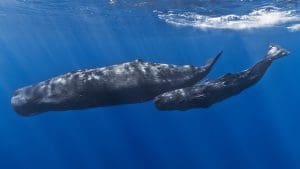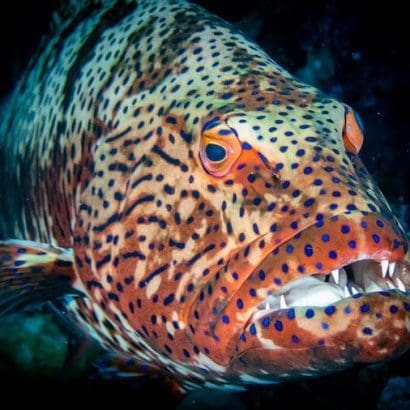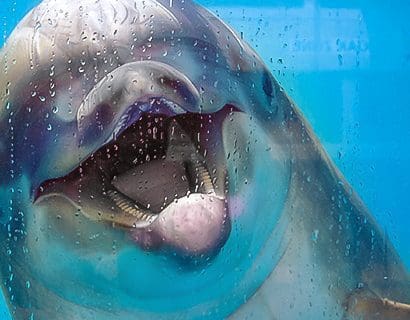
Humpback whales, with their majestic presence and awe-inspiring acrobatics, have long captivated the fascination of marine enthusiasts and nature lovers alike. These magnificent creatures, known for their massive size and distinctive hump-shaped dorsal fins, possess a remarkable ability to perform breathtaking acrobatic displays in the water. From spectacular breaches to graceful tail slaps, their agility and grace seem to defy the boundaries of their underwater realm. The question arises: Why do humpback whales engage in these remarkable acrobatics? In this article, we will delve into the intriguing world of humpback whale behavior and explore the possible reasons behind their captivating performances. Join us on this journey as we unravel the mysteries of why humpback whales choose to become true acrobats of the sea.
Contents
Behavior of humpback whales.
Humpback whales are known for their fascinating and complex behaviors, which have captivated researchers and observers for years. These magnificent marine mammals exhibit a wide range of behaviors that encompass feeding, social interactions, migration, and breeding.
Feeding Behavior:
Humpback whales are filter feeders, and their feeding behavior is often characterized by a technique known as “lunge feeding.” This involves lunging forward with their mouths wide open, engulfing large volumes of water along with their prey, such as krill or small fish. Afterward, they use baleen plates in their mouths to filter out the water, while retaining the food. This feeding behavior is often observed in areas where there is an abundance of prey.
Social Interactions:
Humpback whales are highly social creatures and exhibit various social behaviors. They are frequently seen in groups, ranging from small pods to larger aggregations. These groups can consist of individuals of different ages and sexes. Some common social behaviors include breaching (propelling their bodies out of the water and crashing back down), tail slapping, flipper slapping, and spyhopping (raising their heads vertically above the water to observe their surroundings).
Migration:
Humpback whales are known for their impressive long-distance migrations. They undertake seasonal journeys between feeding grounds in polar regions and breeding grounds in warmer waters. These migrations can cover thousands of kilometers and often follow well-established routes. The exact mechanisms and cues that guide their migrations are still the subject of scientific investigation.
Breeding and Reproduction:
Breeding behavior among humpback whales is a remarkable spectacle. Male humpbacks produce complex songs that can last up to 20 minutes and are repeated over long periods. These songs are believed to play a crucial role in attracting and communicating with females. Breeding also involves competitive behaviors among males, such as aggressive displays and physical interactions.
Parental Care:
Humpback whales display strong maternal care. After a gestation period of approximately 11 months, females give birth to a single calf. The calf relies on its mother’s milk for nourishment and protection. The mother provides guidance, protection, and teaches the calf essential skills such as feeding techniques and migration routes. The bond between mother and calf is strong and can last for several months before the calf becomes independent.
Acrobatics of humpback whales.
Humpback whales are renowned for their spectacular acrobatic displays, which leave observers in awe of their agility and power. These acrobatic behaviors are a testament to the remarkable capabilities of these massive marine mammals.
Breaching:
One of the most iconic acrobatic behaviors of humpback whales is breaching. Breaching involves the whale propelling its entire body out of the water and crashing back down with a tremendous splash. This powerful maneuver can be repeated multiple times in succession. The reasons behind breaching are not entirely understood, but it is believed to serve multiple purposes. It may be a form of communication, a way to dislodge parasites from their skin, a means of attracting a mate, or simply an expression of their strength and vitality.
Tail Slapping:
Another striking acrobatic behavior displayed by humpback whales is tail slapping, also known as lobtailing. This behavior involves the whale forcefully slapping its large tail flukes against the water’s surface, creating a loud splash. Tail slapping can be performed in various patterns and frequencies. While the exact function of this behavior is not fully known, it is thought to serve as a form of communication between individuals or a warning signal to nearby whales.
Pectoral Fin Displays:
Humpback whales also showcase their acrobatic abilities through pectoral fin displays. These displays involve the whale lifting one or both of its massive pectoral fins out of the water and waving or slapping them against the surface. This behavior is often observed during social interactions, such as mating or territorial disputes. The purpose of pectoral fin displays is believed to be a means of communication, asserting dominance, or attracting potential mates.
Spyhopping:
Spyhopping is a behavior where humpback whales raise their heads vertically out of the water, allowing them to observe their surroundings. It is a unique acrobatic behavior that enables the whales to get a better view above the waterline. While the exact reasons for spyhopping are not fully understood, it is thought to serve a variety of purposes, including navigation, prey detection, social interactions, or simply curiosity about their environment.
Scientific hypotheses.
Scientific hypotheses refer to proposed explanations or predictions based on existing evidence and knowledge, which are subject to testing and further investigation. In the context of humpback whales and their acrobatic behaviors, scientists have put forth several hypotheses to try to understand the reasons behind these captivating displays.
Mating and Courtship:
One hypothesis suggests that acrobatic behaviors in humpback whales, such as breaching and tail slapping, play a role in courtship and mating rituals. These displays could serve as a way for males to attract females, demonstrate their strength and fitness, or establish dominance among competing males. The impressive nature of acrobatics might act as a visual spectacle, influencing mate choice and enhancing reproductive success.
Communication:
Another hypothesis proposes that acrobatic behaviors serve as a form of communication between humpback whales. Breaching, tail slapping, and pectoral fin displays could convey information about territory, social status, or group cohesion. These displays might also serve to coordinate group movements during feeding or migration, enabling efficient communication over long distances.
Parasite Removal and Body Maintenance:
Acrobatic behaviors could also be related to parasite removal and general body maintenance in humpback whales. When breaching or tail slapping, the forceful impact with the water may dislodge parasites, barnacles, or other unwanted organisms from the whale’s skin. By engaging in acrobatic displays, humpback whales may effectively cleanse their bodies and maintain optimal health and hygiene.
Playful Behavior:
Some scientists suggest that acrobatics in humpback whales could be a form of play or recreational behavior. Similar to how humans engage in sports or playful activities, humpback whales may perform acrobatics simply for the enjoyment of it. Play behaviors may help in building social bonds, refining physical skills, or reducing stress levels, contributing to the overall well-being of the individuals.
Courtship and reproduction.
Courtship and reproduction play a significant role in the lives of humpback whales. These behaviors are crucial for ensuring the continuation of the species and are marked by fascinating rituals and interactions.
Breeding Grounds:
Humpback whales have specific breeding grounds where they congregate during the mating season. These breeding grounds are often located in warmer waters closer to the equator, providing an ideal environment for courtship and calving.
Male Songs:
One of the most remarkable aspects of humpback whale courtship is the elaborate songs produced by the male whales. These songs are complex and can last up to 20 minutes or more, consisting of a series of repeated patterns and themes. The purpose of these songs is believed to be attracting female whales and establishing dominance among competing males. The songs can carry over long distances and are specific to each population or subgroup of humpback whales.
Competitive Displays:
Male humpback whales engage in competitive displays to gain the attention of females and establish their dominance. These displays can include breaching, tail slapping, and aggressive behaviors towards other males. By showcasing their physical strength and agility through acrobatic displays, males aim to impress females and increase their chances of successful mating.
Female Choice:
Female humpback whales have the ultimate say in choosing their mates. It is believed that they select males based on various factors, including the quality of their songs, the intensity of their displays, and their overall fitness. Females may be attracted to males that exhibit strong and impressive acrobatic behaviors during courtship.
Gestation and Birth:
After successful mating, the female humpback whale undergoes a gestation period of approximately 11 months. Calving typically occurs in warm waters during the winter months, where the newborn calf has a higher chance of survival. The mother provides essential care and protection to the calf, teaching it necessary skills and providing nourishment through her milk.
Maternal Care:
Female humpback whales demonstrate strong maternal instincts and care for their offspring. The mother-calf bond is vital, and the mother guides the calf during its early stages of life. The calf learns essential behaviors, such as feeding techniques and migration routes, from its mother. This nurturing period can last several months before the calf becomes more independent.
Humpback whales are highly social creatures known for their complex communication and social behaviors. These aspects of their lives play a crucial role in their interactions, group dynamics, and overall well-being.
Vocalizations:
Humpback whales are famous for their melodic and diverse songs, which are an important form of communication. Male humpbacks produce these songs primarily during the breeding season, and they can be heard over long distances underwater. The purpose of these songs is believed to be attracting mates, establishing territory, or maintaining social bonds within the population. Each population or subgroup of humpback whales has its unique song patterns.
Body Language and Displays:
Beyond vocalizations, humpback whales communicate through various body language and displays. These include breaching (propelling their bodies out of the water and crashing back down), tail slapping, pectoral fin displays, and spyhopping (raising their heads vertically above the water). These behaviors can convey information about social status, intentions, and emotions. For example, breaching might signal excitement, playfulness, or a territorial display.
Group Dynamics:
Humpback whales exhibit a range of social behaviors within their groups. They are often seen in pods or aggregations that can vary in size. These groups may consist of individuals of different ages and sexes. The whales engage in activities like feeding, traveling, and socializing together. Within the groups, there can be hierarchical structures, with dominant individuals asserting their authority and others following their lead.
Cooperative Feeding:
Humpback whales also demonstrate cooperative feeding behaviors. They often engage in a practice called bubble net feeding, where a group of whales work together to trap fish by blowing bubbles in a circular pattern, forming a “net” of bubbles around the prey. This cooperative behavior allows them to maximize their chances of catching food and is a remarkable example of their social intelligence.
Mother-Calf Bond:
The bond between mother and calf is particularly strong in humpback whales. The mother provides essential care, guidance, and protection to her calf. They communicate through physical contact, vocalizations, and body language. The mother teaches the calf important skills, such as feeding techniques and migration routes, ensuring its survival and successful integration into the social group.
Hypotheses suggesting reasons for the acrobatics of humpback whales.
In conclusion, numerous hypotheses have been put forth to explain the reasons behind the acrobatic behaviors of humpback whales. These majestic marine mammals engage in breathtaking displays such as breaching, tail slapping, and pectoral fin displays, captivating observers and researchers alike. While the true motivations behind these behaviors are not yet fully understood, several theories have emerged.
One hypothesis proposes that acrobatics serve as a form of courtship and mating behavior. These impressive displays may attract potential mates, showcase the strength and fitness of males, and establish dominance within competing individuals. Another hypothesis suggests that acrobatics serve as a means of communication among humpback whales. Breaching, tail slapping, and other displays could convey information about territory, social status, or group cohesion.

Acrobatic behaviors may also play a role in parasite removal and body maintenance for humpback whales. The forceful impact with the water during breaches or tail slaps may dislodge parasites, barnacles, or other unwanted organisms from their skin, contributing to their overall health and well-being. Additionally, playful behavior has been proposed as a possible explanation for acrobatics, as humpback whales may engage in these displays for the sheer enjoyment and social interaction it provides.
If you’re a fan of marine curiosities, click here.


